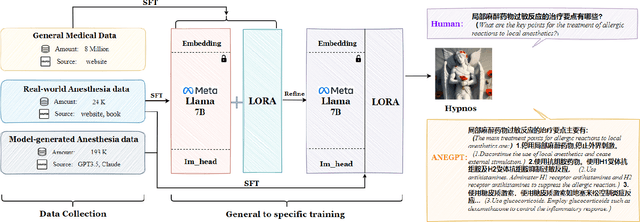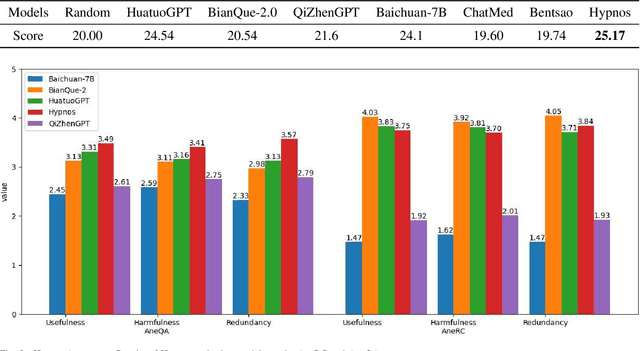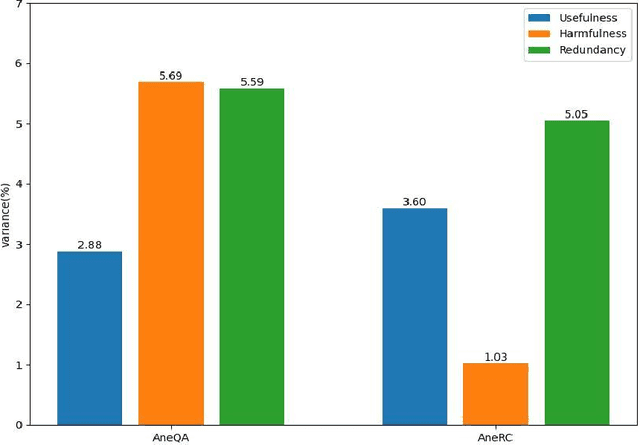Yanhong Li
DIY-MKG: An LLM-Based Polyglot Language Learning System
Jul 02, 2025Abstract:Existing language learning tools, even those powered by Large Language Models (LLMs), often lack support for polyglot learners to build linguistic connections across vocabularies in multiple languages, provide limited customization for individual learning paces or needs, and suffer from detrimental cognitive offloading. To address these limitations, we design Do-It-Yourself Multilingual Knowledge Graph (DIY-MKG), an open-source system that supports polyglot language learning. DIY-MKG allows the user to build personalized vocabulary knowledge graphs, which are constructed by selective expansion with related words suggested by an LLM. The system further enhances learning through rich annotation capabilities and an adaptive review module that leverages LLMs for dynamic, personalized quiz generation. In addition, DIY-MKG allows users to flag incorrect quiz questions, simultaneously increasing user engagement and providing a feedback loop for prompt refinement. Our evaluation of LLM-based components in DIY-MKG shows that vocabulary expansion is reliable and fair across multiple languages, and that the generated quizzes are highly accurate, validating the robustness of DIY-MKG.
How Instruction and Reasoning Data shape Post-Training: Data Quality through the Lens of Layer-wise Gradients
Apr 14, 2025



Abstract:As the post-training of large language models (LLMs) advances from instruction-following to complex reasoning tasks, understanding how different data affect finetuning dynamics remains largely unexplored. In this paper, we present a spectral analysis of layer-wise gradients induced by low/high-quality instruction and reasoning data for LLM post-training. Our analysis reveals that widely-studied metrics for data evaluation, e.g., IFD, InsTag, Difficulty, and Reward, can be explained and unified by spectral properties computed from gradients' singular value decomposition (SVD). Specifically, higher-quality data are usually associated with lower nuclear norms and higher effective ranks. Notably, effective rank exhibits better robustness and resolution than nuclear norm in capturing subtle quality differences. For example, reasoning data achieves substantially higher effective ranks than instruction data, implying richer gradient structures on more complex tasks. Our experiments also highlight that models within the same family share similar gradient patterns regardless of their sizes, whereas different model families diverge significantly. Providing a unified view on the effects of data quality across instruction and reasoning data, this work illuminates the interplay between data quality and training stability, shedding novel insights into developing better data exploration strategies for post-training.
SPICE: A Synergistic, Precise, Iterative, and Customizable Image Editing Workflow
Apr 13, 2025Abstract:Recent prompt-based image editing models have demonstrated impressive prompt-following capability at structural editing tasks. However, existing models still fail to perform local edits, follow detailed editing prompts, or maintain global image quality beyond a single editing step. To address these challenges, we introduce SPICE, a training-free workflow that accepts arbitrary resolutions and aspect ratios, accurately follows user requirements, and improves image quality consistently during more than 100 editing steps. By synergizing the strengths of a base diffusion model and a Canny edge ControlNet model, SPICE robustly handles free-form editing instructions from the user. SPICE outperforms state-of-the-art baselines on a challenging realistic image-editing dataset consisting of semantic editing (object addition, removal, replacement, and background change), stylistic editing (texture changes), and structural editing (action change) tasks. Not only does SPICE achieve the highest quantitative performance according to standard evaluation metrics, but it is also consistently preferred by users over existing image-editing methods. We release the workflow implementation for popular diffusion model Web UIs to support further research and artistic exploration.
Context-Efficient Retrieval with Factual Decomposition
Mar 25, 2025Abstract:There has recently been considerable interest in incorporating information retrieval into large language models (LLMs). Retrieval from a dynamically expanding external corpus of text allows a model to incorporate current events and can be viewed as a form of episodic memory. Here we demonstrate that pre-processing the external corpus into semi-structured ''atomic facts'' makes retrieval more efficient. More specifically, we demonstrate that our particular form of atomic facts improves performance on various question answering tasks when the amount of retrieved text is limited. Limiting the amount of retrieval reduces the size of the context and improves inference efficiency.
PFformer: A Position-Free Transformer Variant for Extreme-Adaptive Multivariate Time Series Forecasting
Feb 27, 2025Abstract:Multivariate time series (MTS) forecasting is vital in fields like weather, energy, and finance. However, despite deep learning advancements, traditional Transformer-based models often diminish the effect of crucial inter-variable relationships by singular token embedding and struggle to effectively capture complex dependencies among variables, especially in datasets with rare or extreme events. These events create significant imbalances and lead to high skewness, complicating accurate prediction efforts. This study introduces PFformer, a position-free Transformer-based model designed for single-target MTS forecasting, specifically for challenging datasets characterized by extreme variability. PFformer integrates two novel embedding strategies: Enhanced Feature-based Embedding (EFE) and Auto-Encoder-based Embedding (AEE). EFE effectively encodes inter-variable dependencies by mapping related sequence subsets to high-dimensional spaces without positional constraints, enhancing the encoder's functionality. PFformer shows superior forecasting accuracy without the traditional limitations of positional encoding in MTS modeling. We evaluated PFformer across four challenging datasets, focusing on two key forecasting scenarios: long sequence prediction for 3 days ahead and rolling predictions every four hours to reflect real-time decision-making processes in water management. PFformer demonstrated remarkable improvements, from 20% to 60%, compared with state-of-the-art models.
Chunk-Distilled Language Modeling
Dec 31, 2024Abstract:We introduce Chunk-Distilled Language Modeling (CD-LM), an approach to text generation that addresses two challenges in current large language models (LLMs): the inefficiency of token-level generation, and the difficulty of adapting to new data and knowledge. Our method combines deep network-based LLMs with a straightforward retrieval module, which allows the generation of multi-token text chunks at a single decoding step. Our retrieval framework enables flexible construction of model- or domain-specific datastores, either leveraging the internal knowledge of existing models, or incorporating expert insights from human-annotated corpora. This adaptability allows for enhanced control over the language model's distribution without necessitating additional training. We present the CD-LM formulation along with performance metrics demonstrating its ability to improve language model performance and efficiency across a diverse set of downstream tasks. Code and data will be made publicly available.
What Happened in LLMs Layers when Trained for Fast vs. Slow Thinking: A Gradient Perspective
Oct 31, 2024



Abstract:What makes a difference in the post-training of LLMs? We investigate the training patterns of different layers in large language models (LLMs), through the lens of gradient, when training with different responses and initial models. We are specifically interested in how fast vs. slow thinking affects the layer-wise gradients, given the recent popularity of training LLMs on reasoning paths such as chain-of-thoughts (CoT) and process rewards. In our study, fast thinking without CoT leads to larger gradients and larger differences of gradients across layers than slow thinking (Detailed CoT), indicating the learning stability brought by the latter. Moreover, pre-trained LLMs are less affected by the instability of fast thinking than instruction-tuned LLMs. Additionally, we study whether the gradient patterns can reflect the correctness of responses when training different LLMs using slow vs. fast thinking paths. The results show that the gradients of slow thinking can distinguish correct and irrelevant reasoning paths. As a comparison, we conduct similar gradient analyses on non-reasoning knowledge learning tasks, on which, however, trivially increasing the response length does not lead to similar behaviors of slow thinking. Our study strengthens fundamental understandings of LLM training and sheds novel insights on its efficiency and stability, which pave the way towards building a generalizable System-2 agent. Our code, data, and gradient statistics can be found in: https://github.com/MingLiiii/Layer_Gradient.
When Hindsight is Not 20/20: Testing Limits on Reflective Thinking in Large Language Models
Apr 14, 2024



Abstract:Recent studies suggest that self-reflective prompting can significantly enhance the reasoning capabilities of Large Language Models (LLMs). However, the use of external feedback as a stop criterion raises doubts about the true extent of LLMs' ability to emulate human-like self-reflection. In this paper, we set out to clarify these capabilities under a more stringent evaluation setting in which we disallow any kind of external feedback. Our findings under this setting show a split: while self-reflection enhances performance in TruthfulQA, it adversely affects results in HotpotQA. We conduct follow-up analyses to clarify the contributing factors in these patterns, and find that the influence of self-reflection is impacted both by reliability of accuracy in models' initial responses, and by overall question difficulty: specifically, self-reflection shows the most benefit when models are less likely to be correct initially, and when overall question difficulty is higher. We also find that self-reflection reduces tendency toward majority voting. Based on our findings, we propose guidelines for decisions on when to implement self-reflection. We release the codebase for reproducing our experiments at https://github.com/yanhong-lbh/LLM-SelfReflection-Eval.
Towards Training A Chinese Large Language Model for Anesthesiology
Mar 05, 2024



Abstract:Medical large language models (LLMs) have gained popularity recently due to their significant practical utility. However, most existing research focuses on general medicine, and there is a need for in-depth study of LLMs in specific fields like anesthesiology. To fill the gap, we introduce Hypnos, a Chinese Anesthesia model built upon existing LLMs, e.g., Llama. Hypnos' contributions have three aspects: 1) The data, such as utilizing Self-Instruct, acquired from current LLMs likely includes inaccuracies. Hypnos implements a cross-filtering strategy to improve the data quality. This strategy involves using one LLM to assess the quality of the generated data from another LLM and filtering out the data with low quality. 2) Hypnos employs a general-to-specific training strategy that starts by fine-tuning LLMs using the general medicine data and subsequently improving the fine-tuned LLMs using data specifically from Anesthesiology. The general medical data supplement the medical expertise in Anesthesiology and enhance the effectiveness of Hypnos' generation. 3) We introduce a standardized benchmark for evaluating medical LLM in Anesthesiology. Our benchmark includes both publicly available instances from the Internet and privately obtained cases from the Hospital. Hypnos outperforms other medical LLMs in anesthesiology in metrics, GPT-4, and human evaluation on the benchmark dataset.
Learning from Polar Representation: An Extreme-Adaptive Model for Long-Term Time Series Forecasting
Dec 16, 2023Abstract:In the hydrology field, time series forecasting is crucial for efficient water resource management, improving flood and drought control and increasing the safety and quality of life for the general population. However, predicting long-term streamflow is a complex task due to the presence of extreme events. It requires the capture of long-range dependencies and the modeling of rare but important extreme values. Existing approaches often struggle to tackle these dual challenges simultaneously. In this paper, we specifically delve into these issues and propose Distance-weighted Auto-regularized Neural network (DAN), a novel extreme-adaptive model for long-range forecasting of stremflow enhanced by polar representation learning. DAN utilizes a distance-weighted multi-loss mechanism and stackable blocks to dynamically refine indicator sequences from exogenous data, while also being able to handle uni-variate time-series by employing Gaussian Mixture probability modeling to improve robustness to severe events. We also introduce Kruskal-Wallis sampling and gate control vectors to handle imbalanced extreme data. On four real-life hydrologic streamflow datasets, we demonstrate that DAN significantly outperforms both state-of-the-art hydrologic time series prediction methods and general methods designed for long-term time series prediction.
 Add to Chrome
Add to Chrome Add to Firefox
Add to Firefox Add to Edge
Add to Edge